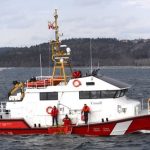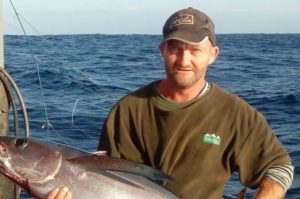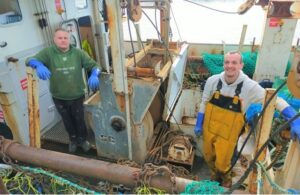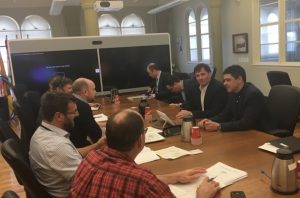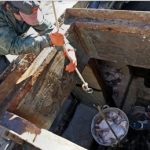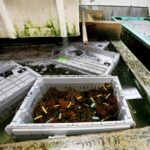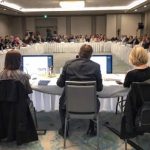Tag Archives: open-net pen aquaculture
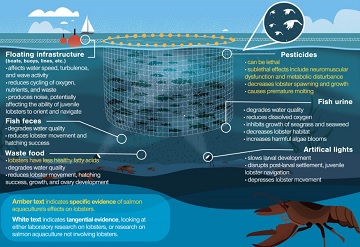
How Might Fish Farms Be Affecting the Lobster? Let us count the ways.
“There is a tremendous amount of waste generated by fish farms,” Milewski says. “I don’t think people have a sense of the scale.” A fairly typical farm of about 600,000 fish will generate around 40 tonnes of waste every month during its 22-month production cycle. “It’s understandable how that waste can change lobsters’ behavior, distribution, and abundance,” she adds. But the review also identified serious gaps in our understanding of the interactions between aquaculture operations and lobsters. While some aspects, such as the use of chemical pesticides, have been well studied, information on others, including waste discharges, disease, and noise, are limited or entirely lacking. >click to read< 11:02
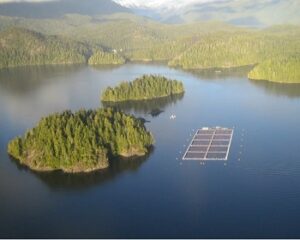
A study suggests farmed fish is the source of a virus spread among wild salmon as they migrate past
Evidence shows a debilitating virus found in British Columbia salmon was transferred from Atlantic fish farms, which then spread from Pacific aquaculture operations into wild fish, says a study published Wednesday. The researchers used genome sequencing to trace the piscine orthoreovirus, or PRV, that they say was first introduced to B.C. waters from Norway about 30 years ago at the start of open-net pen aquaculture in the province. The study, published in the peer-reviewed journal Science Advances, says the evidence now suggests the virus is continuously spread between farmed and wild Pacific salmon as they migrate past the farms. >click to read< 10:25
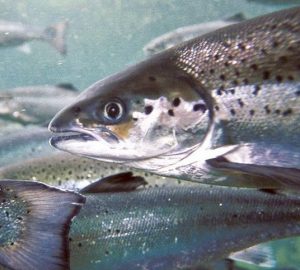
Leo White: Comparing open-net to recirculatory fish farming
In his letter, Cyr Couturier claims that open-net pen (ONP) aquaculture is alive and well in Newfoundland and Labrador and everywhere else. Nothing could be further from the truth.,,, In Norway, the birthplace of ONP technology, it is not possible to even get a licence to establish a new salmon aquaculture farm.,,,licences for Recirculatory Aquaculture Systems (RAS), which are land-based, are free. Clearly in Norway RAS is seen as the future for farming Atlantic salmon. Meanwhile in N.L., access fees are negligible and salmon farmers pay nothing for the incredible damage and pollution they create. >click to read< 11:36
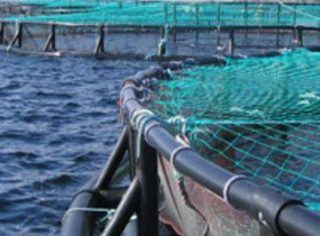
Letter: Open-net pen aquaculture is a failed technology
From the letter, The key question is whether the future of salmon aquaculture in the North American market will be closed-containment land-based (CCLB) or open-net pen (ONP). The government of Newfoundland and Labrador is betting $30 million that projects like the environmentally disastrous Grieg ONP project planned for Placentia Bay will carry the day and Couturier agrees. ACOA is in for another $10 million grant, not loan, according to its website. Meanwhile, as The Telegram article demonstrates, companies like Nordic Aquafarms in Belfast, Maine, are forging ahead with CCLB projects in Maine and many other U.S. locations. These projects use Recirculatory Aquaculture Systems (RAS), by Leo White >click to read< 09:08
A frenzied, fast-tracked fish-farming bill, Stewart Lamont, Tangier
 For those who will recall, the Doelle-Lahey report was issued prior to Christmas. It called for the absolute reform of open-net pen aquaculture and its sloppy regulation. Government members said they were open to these improvements, but not a peep did they express for nearly four months. Suddenly, last Tuesday on federal budget day, with absolutely no notice and attention largely elsewhere, the sludge hit the fan — if you will forgive the unfortunate phrase. Read the rest here 11:27
For those who will recall, the Doelle-Lahey report was issued prior to Christmas. It called for the absolute reform of open-net pen aquaculture and its sloppy regulation. Government members said they were open to these improvements, but not a peep did they express for nearly four months. Suddenly, last Tuesday on federal budget day, with absolutely no notice and attention largely elsewhere, the sludge hit the fan — if you will forgive the unfortunate phrase. Read the rest here 11:27

































